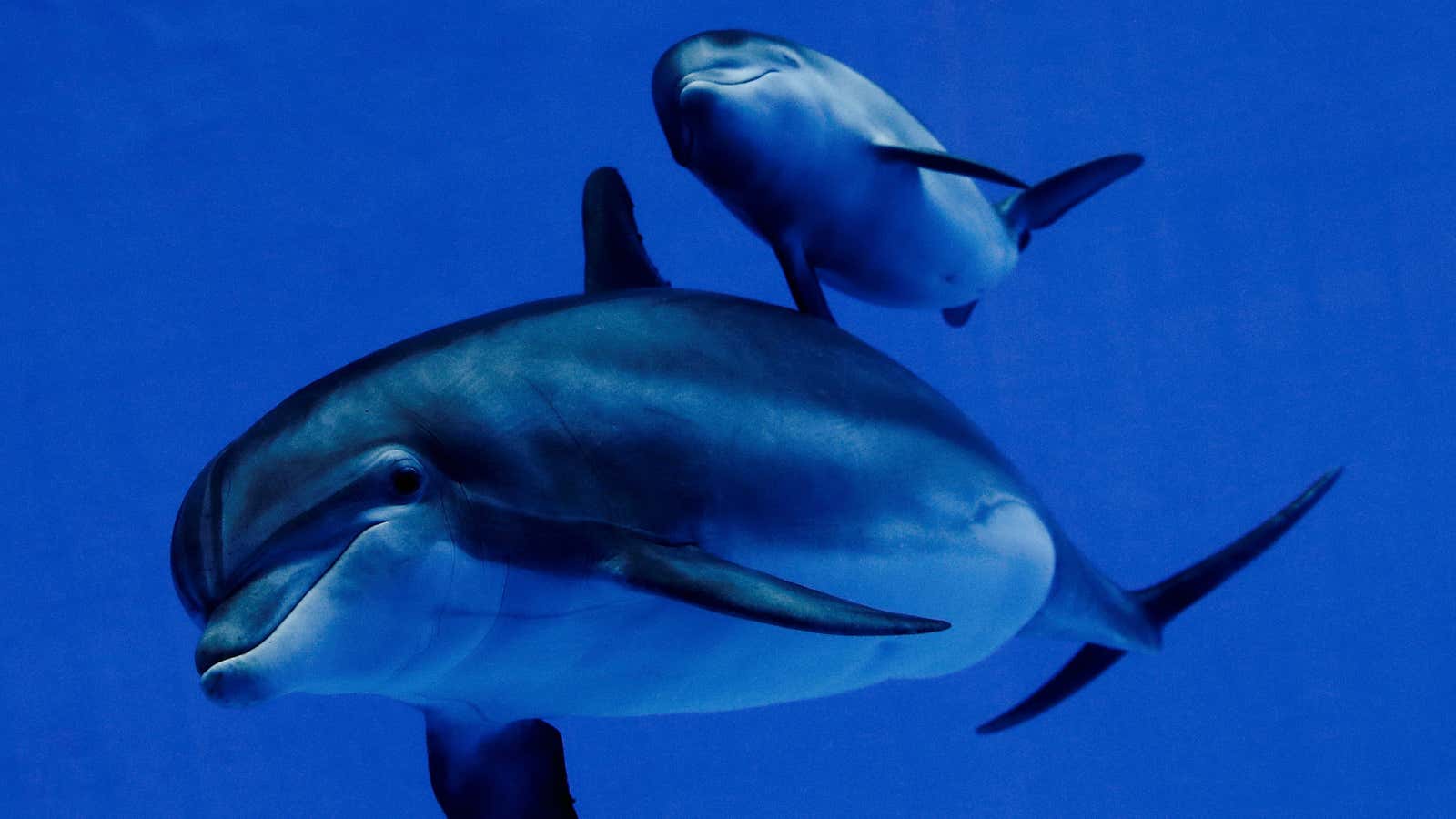The human brain has evolved and expanded over millennia to accommodate our ever-more-complex needs and those of our societies. This process is known as “encephalization” and has given us the big brain we need to communicate, cooperate, reach consensus, empathize, and socialize. The same is true for cetaceans, like whales and dolphins, it seems.
These sea creatures also grew big brains in order to better live in societies, according to a study published on Oct. 16 in Nature Ecology & Evolution. According to Michael Muthukrishna, an economic psychologist at the London School of Economics and co-author of the study, the researchers used two related theories, the Social-Brain Hypothesis and the Cultural-Brain Hypothesis, to make predictions about various relationships between brain size, societal organization, and the breadth of behaviors the cetaceans would display. Then they tested these predictions by creating and evaluating a comprehensive database of cetacean brain size, social structures, and cultural behaviors across species using data from prior studies on 90 types of whales and dolphins.
The study found that cetaceans had complex alliances and communications, played and worked together for mutual benefit, and could even work with other species, like humans. Some also have individual signifiers, sounds that set them apart from others, and can mimic the sounds of others. In addition, it found that brain size predicted the breadth of social and cultural behaviors of these marine creatures (though ecological factors, like prey diversity and latitudinal range, also played a role). The researchers concluded there was a tie between cetacean encephalization, social structure, and group size.
“The apparent co-evolution of brains, social structure, and behavioral richness of marine mammals provides a unique and striking parallel to the large brains and hyper-sociality of humans and other primates on land,” says Susanne Schultz an evolutionary biologist at the University of Manchester, and lead author of the study.
Still, there are major differences between humans and cetaceans. While it’s possible marine creatures will continue to reveal more complex behaviors to humans as we study them further, there are physical limits to their abilities. Cetaceans use simple tools and rudimentary architecture. “Unfortunately, they won’t ever mimic our great metropolises and technologies because they didn’t evolve opposable thumbs,” says Schultz.
That said, cetaceans offer unique insights precisely because they’re so alien to us. Muthukrishna studies the evolution of, and the processes that underlie, human culture. Knowing more about how this works in other creatures can illuminate our understanding of human behavior, he believes, and whales and dolphins could offer unique insights.
“The problem with using primates…is that we don’t know if what we find is because of the evolutionary logic we’re proposing or because these features happen to be present in an ancestor,” he told Quartz. “For example, ours and chimp ancestors may have lived in close groups and had fairly large brains for unrelated reasons.”
But cetaceans are evolutionarily distant from humans, “and their underwater world may as well be a different planet compared to the land we inhabit,” he says. So studying the processes that underlie the evolution of cetacean cultures can help researchers determine what happens as a result of physical circumstances like being on land, or being similarly built, and what factors directly influence prosocial and cultural behaviors.
Schultz doesn’t ever expect to find complex cetacean cities but doesn’t rule out other exciting new discoveries. “It is true we do not fully understand their world or how they impact the marine environment,” she says. “We only have a pinhole view into the complexity of animal lives.”
